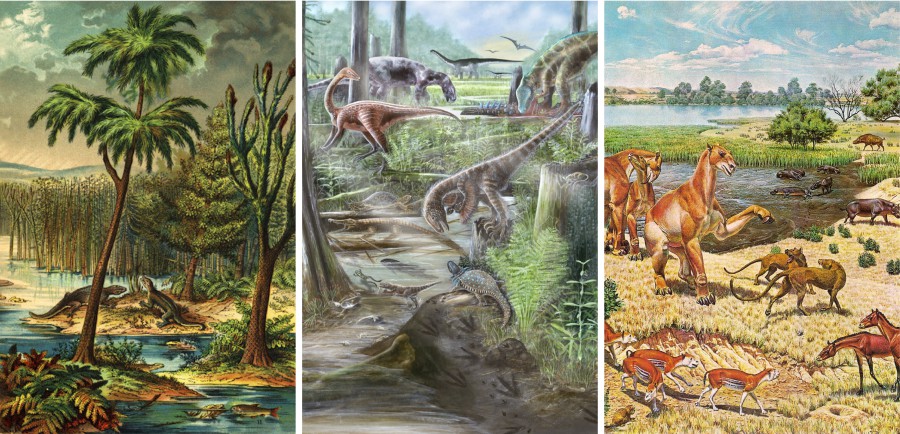
The rich levels of biodiversity on land seen across the globe today are not a recent phenomenon: diversity on land has been similar for at least the last 60 million years, since soon after the extinction of the dinosaurs.
According to a new study led by researchers at the University of Birmingham and involving an international team of collaborators, the number of species within ecological communities on land has increased only sporadically through geological time, with rapid increases in diversity being followed by plateaus lasting tens of millions of years.
Previously, many scientists have argued that diversity increased steadily through geological time, which would mean that biodiversity today is much greater than it was tens of millions of years ago. But building an accurate picture of how land diversity was assembled is challenging because the fossil record generally becomes less complete further back in time. By using modern computing techniques, capable of analysing hundreds of thousands of fossils, patterns are starting to emerge that challenge this view.
The researchers, from the University of Birmingham’s School of Geography, Earth and Environmental Sciences and other institutions in the UK, USA and Australia, were able to study fossil data collected by palaeontologists over the past 200 years at around 30,000 different fossil sites around the globe. The team focused on data from land vertebrates dating back to the very earliest appearance of this group nearly 400 million years ago.
They found that the average number of species within ecological communities of land vertebrates have not increased for tens of millions of years. Their results suggest that interactions between species, including competition for food and space, will limit the overall number of species that can co-exist.
Lead researcher, Dr Roger Close, says: “Scientists often think that species diversity has been increasing unchecked over millions of years, and that diversity is much greater today than it was in the distant past. Our research shows that numbers of species within terrestrial communities are limited over long timescales, which contradicts the results of many experiments in modern ecological communities – now we need to understand why.”
One reason why diversity within ecological communities does not increase unchecked on long timescales could be because resources used by species, such as food and space, are finite. Competition for these resources may prevent new species invading ecosystems and lead to a balance between rates of speciation and extinction. After the origins of major groups of animals, or large-scale ecological disruptions like mass extinctions, though, increases in diversity may happen abruptly – on geological, if not human timescales – and are again followed by long periods where no increases occur.
He adds: “Contrary to what you might expect, the largest increase in diversity within land vertebrate communities came after the mass extinction that wiped out the dinosaurs, 66 million years ago, at the end of the Cretaceous period. Within just a few million years, local diversity had increased to two or three times that of pre-extinction levels – driven primarily by the spectacular success of modern mammals.”
Professor Richard Butler, who was also part of the research team, said “Our work provides an example of the combined power of the fossil record and modern statistical approaches to answer major questions about the origins of modern biodiversity. By understanding how biodiversity has changed in the past, we may be able to better understand the likely long-term impact of the current biodiversity crisis”.
The research is funded by the European Research Council through the European Union's Horizon 2020 research and innovation programme.
ENDS
For further information please contact Beck Lockwood, Press Office, University of Birmingham, tel 0121 414 2772.